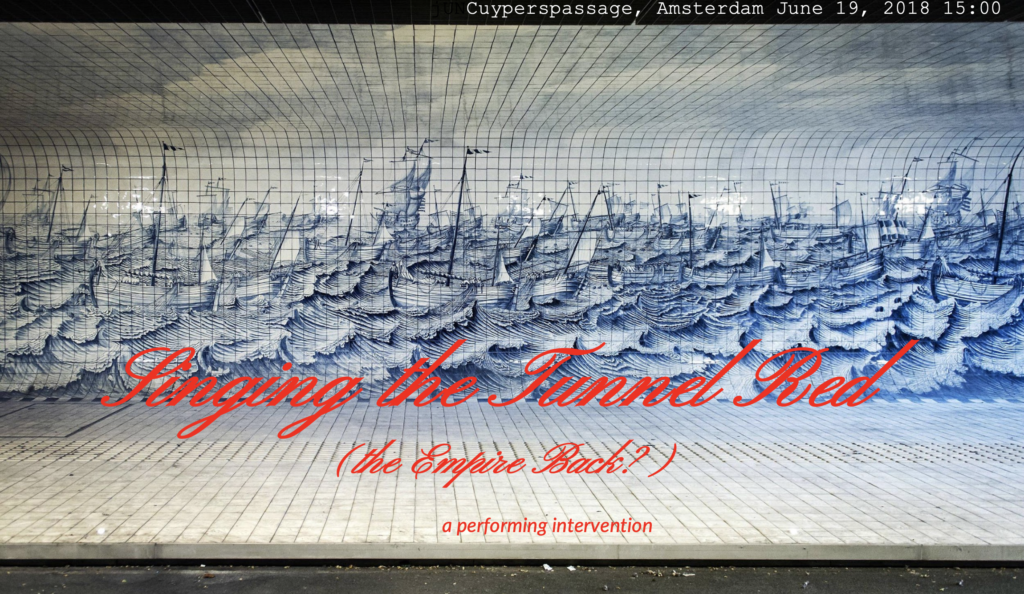
We wore red costumes during the intervention, which formed the colors of the Dutch flag when combined with the blue and white colors of the tiles depicting the fleets on the walls. We sang children folk songs in the passage and recorded our performances.
Singing the Tunnel Red public intervention takes the The Cuyperspassage, a traffic passage at Amsterdam Central Station that connects the city and the waters of the IJ-river, named after the architect of the Rijksmuseum and Central Station, as its focus. Along the footpath wall, there is a tile tableau designed by Irma Boom Office, based on a restored work by the Rotterdam tile painter Cornelis Boumeester (1652-1733), depicting the Warship Rotterdam and the Herring Fleet from the collection of the Rijksmuseum. The intervention explores the affinity of this image with the Dutch East India Company shipyards and attempts to explore the colonial traces in the city. We wore red costumes during the intervention, which formed the colors of the Dutch flag when combined with the blue and white colors of the tiles depicting the fleets on the walls. We sang children folk songs in the passage and recorded our performances.
The performance questions the ways in which national identity is embedded in everyday life, as well as different ways of relating with the cultural objects produced by the city. The notion of “flagging” in Michael Billig’s “Banal Nationalism” (1995), the exploration of the cultural significance of daily activities and pedestrian tactics of resistance in Michel De Certeau “Walking in the city” (1984), questions concerning the Dutch sense of self in Gloria Wekker’s “White Innocence: Paradoxes of Colonialism and Race” (2016) and the role of images in W.J.T. Mitchell’s “What Do Pictures Want?: The Lives and Loves of Images” (2005) are among the theoretical inspirations behind the intervention.